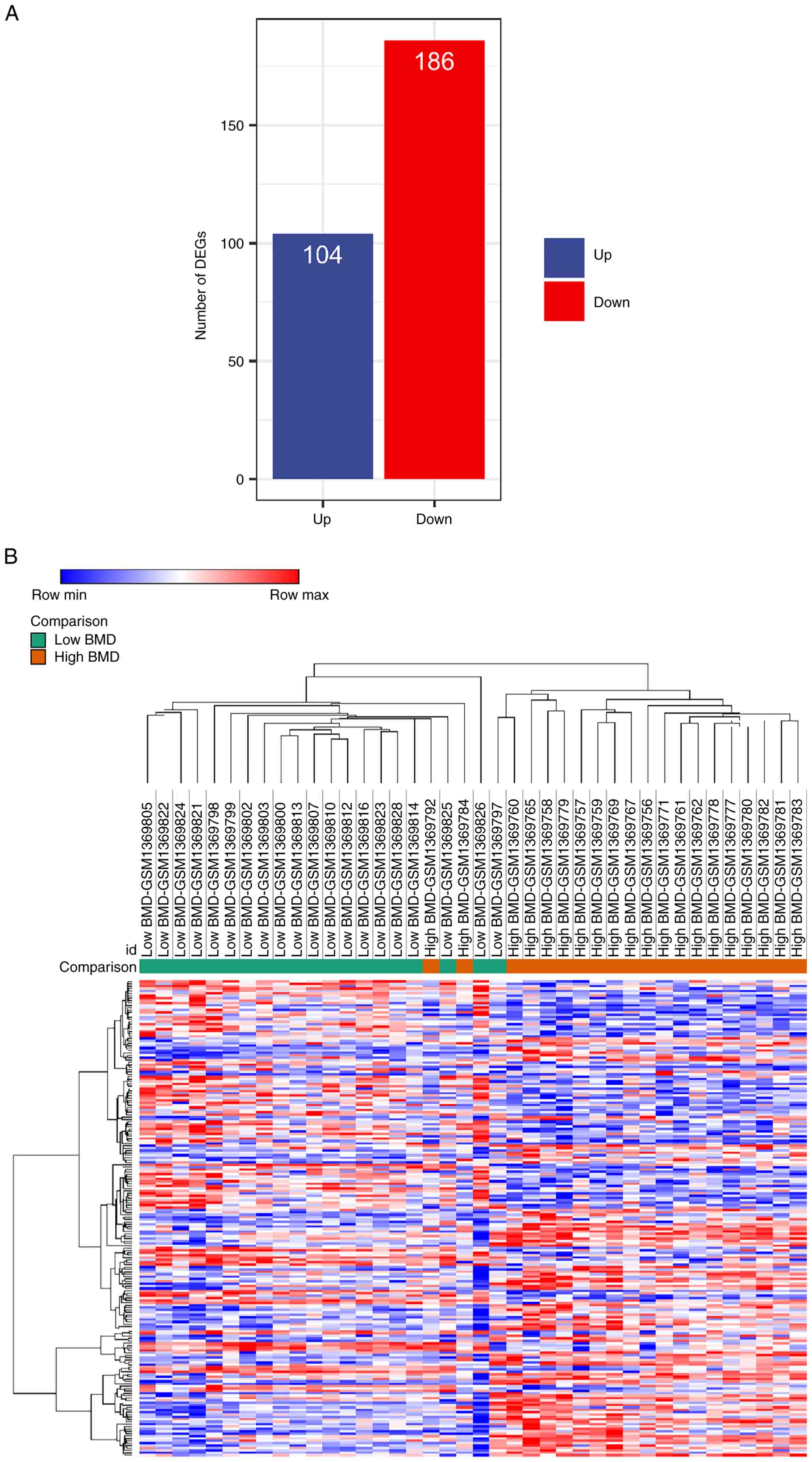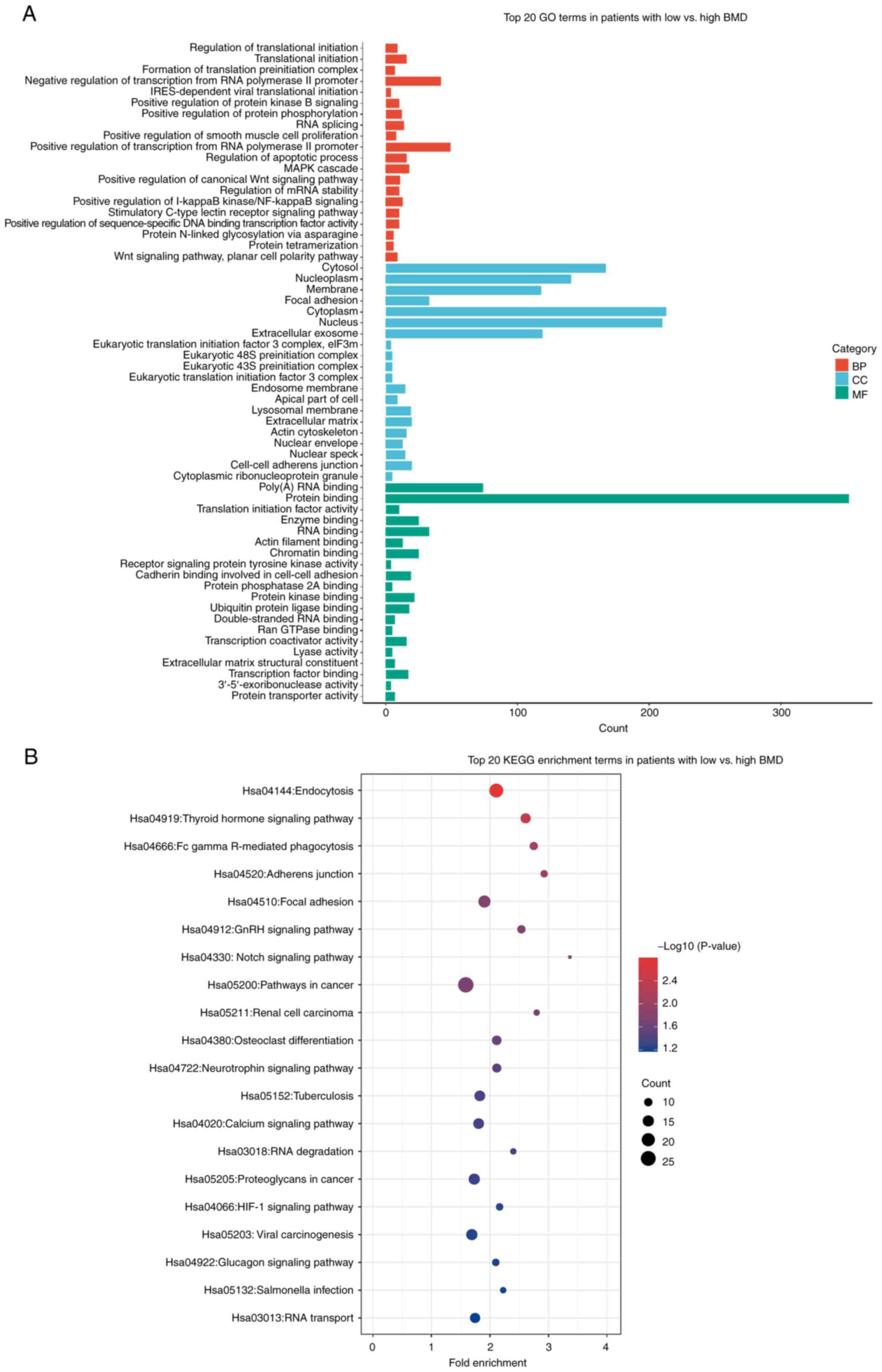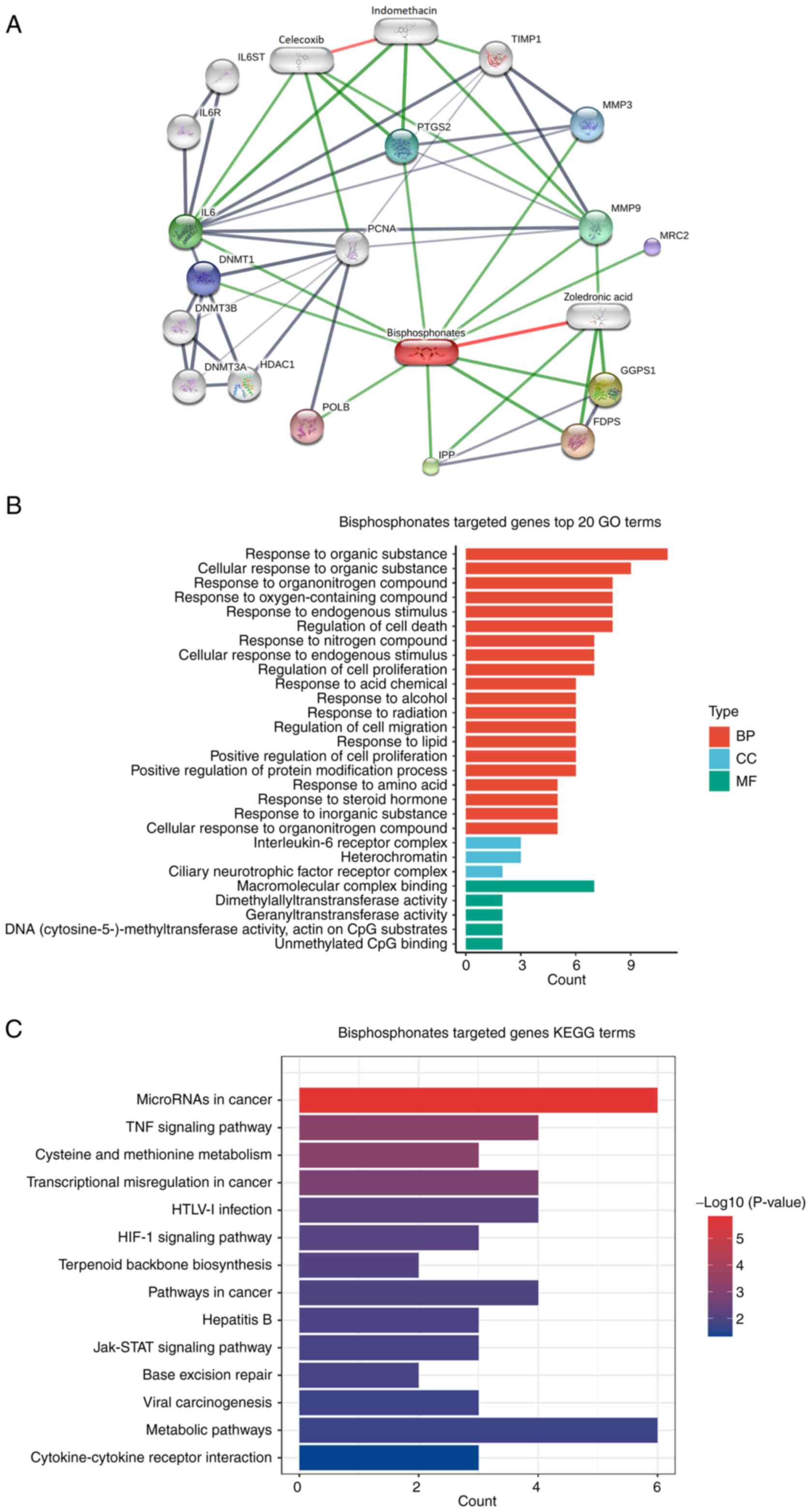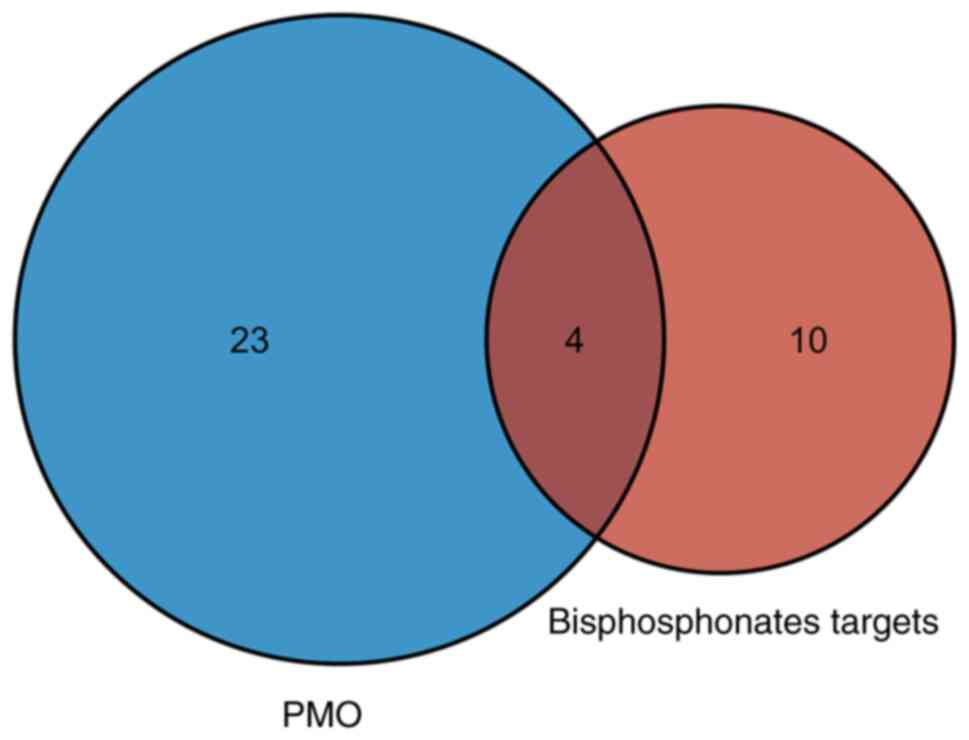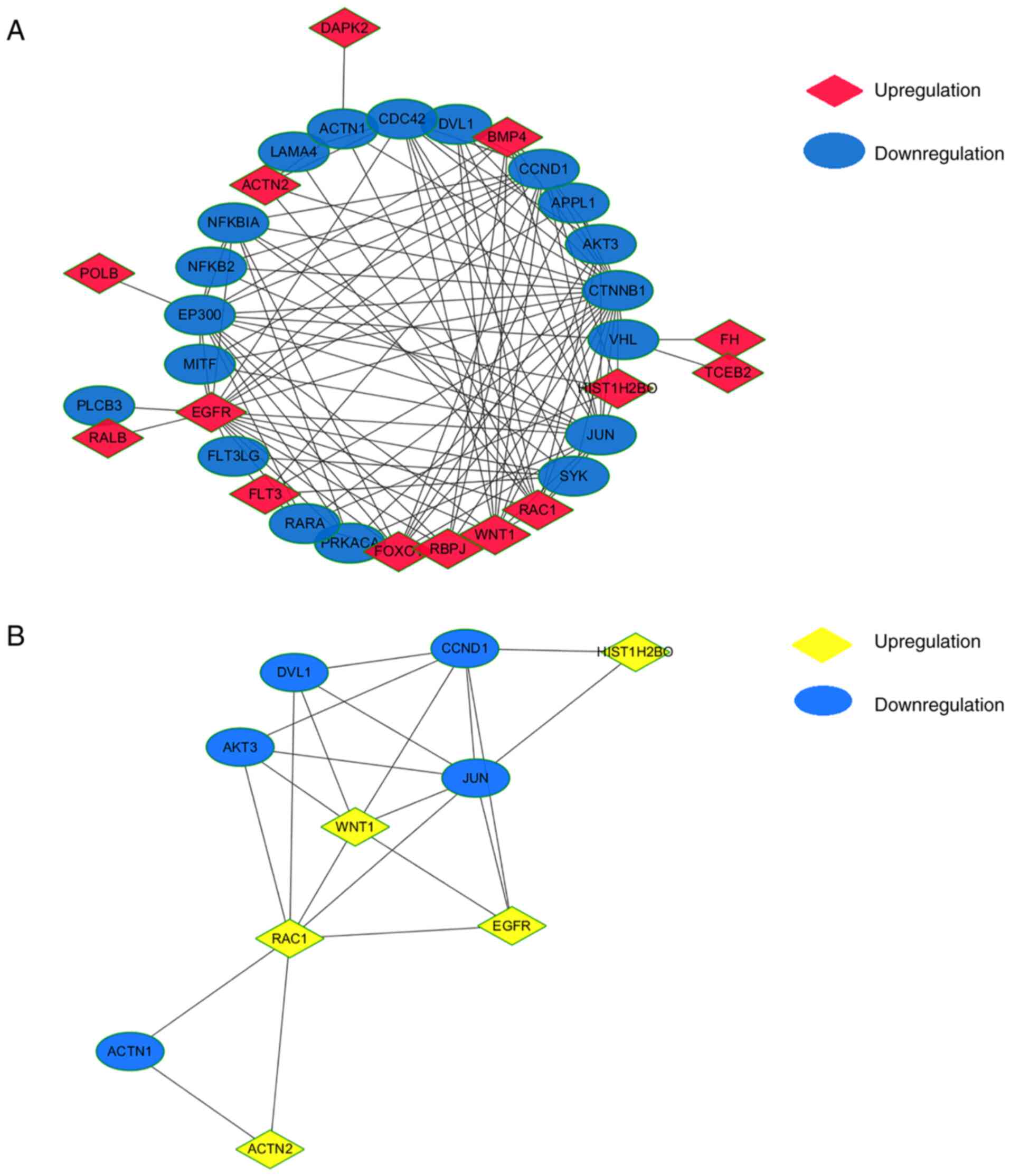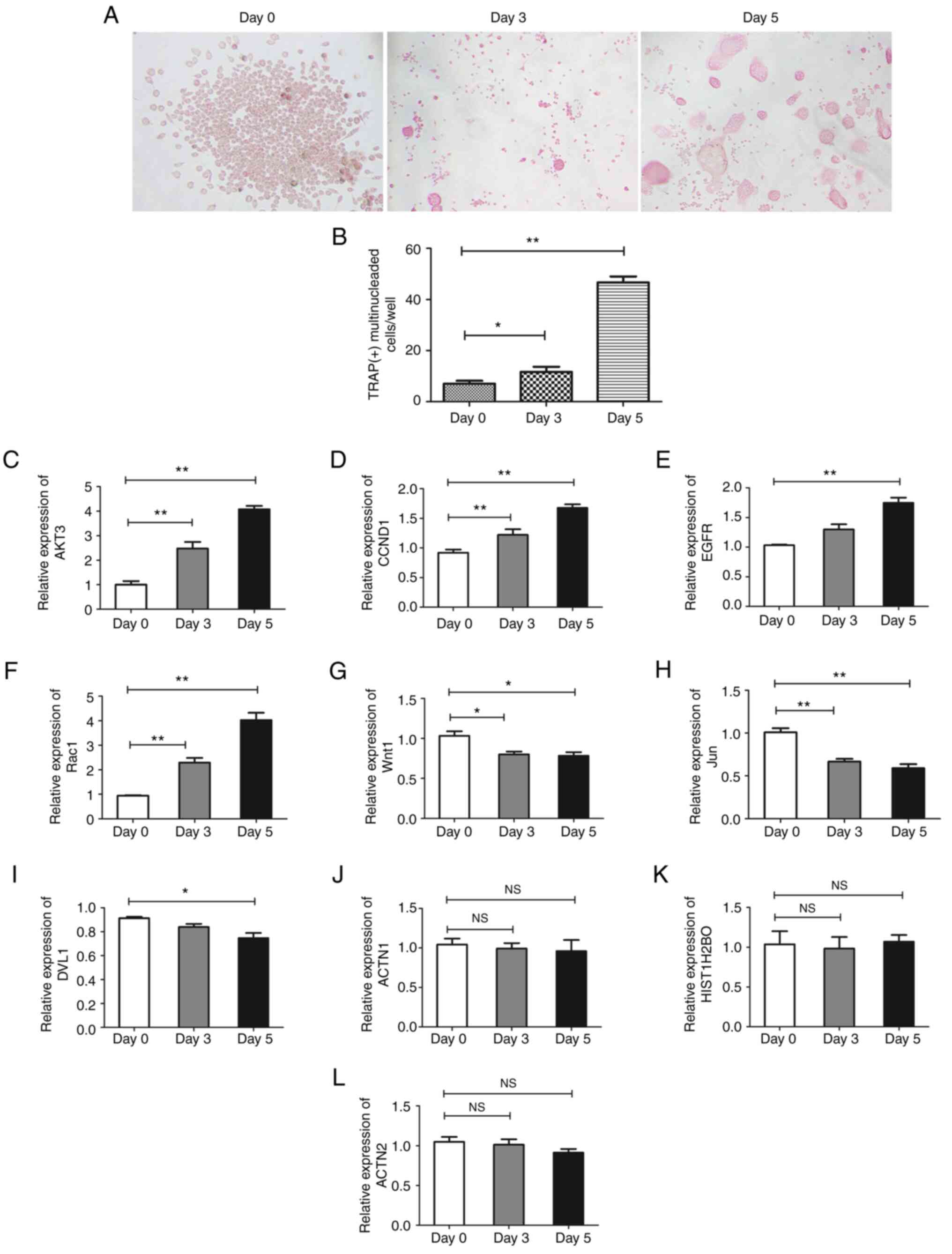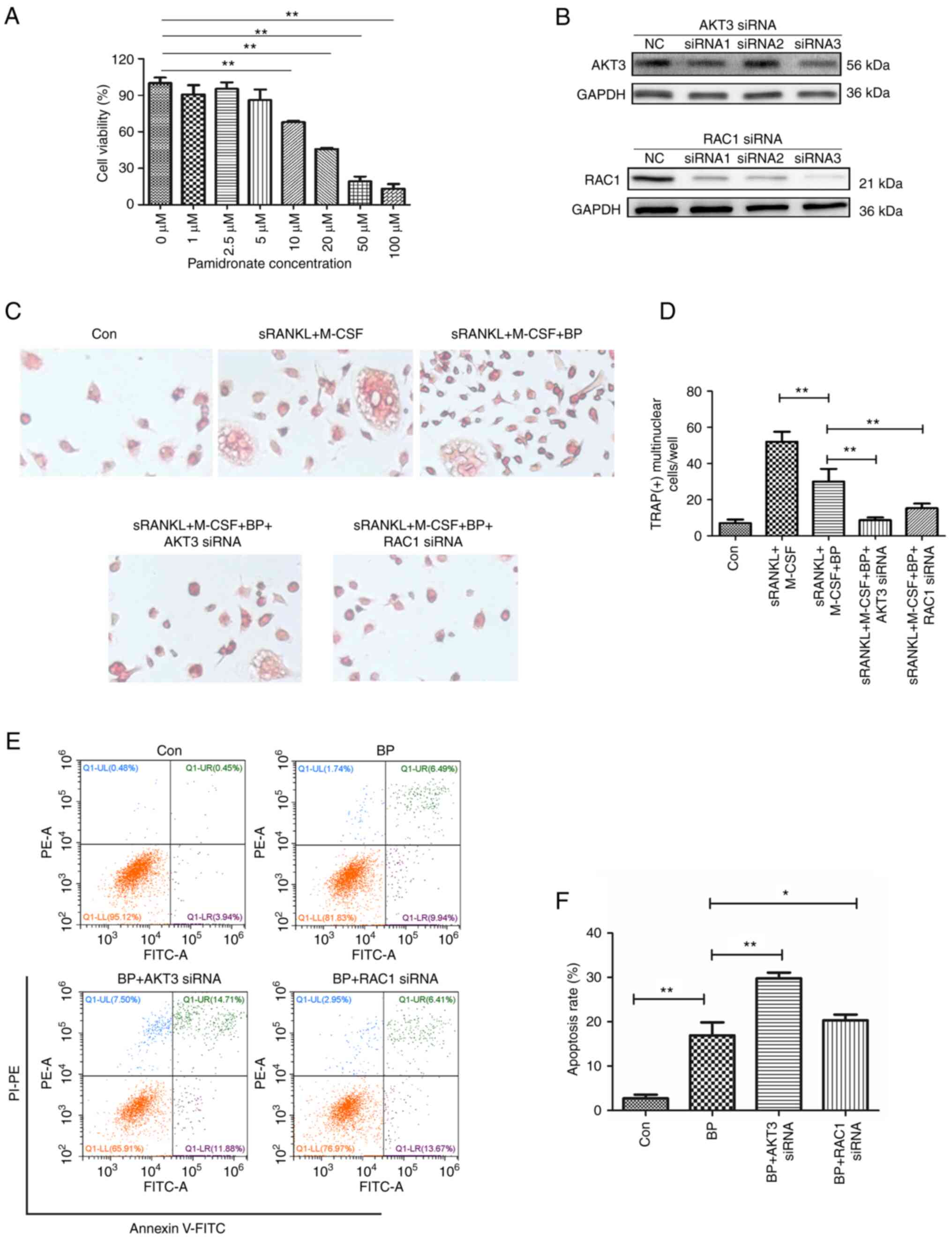|
1
|
Arceo-Mendoza RM and Camacho PM:
Postmenopausal osteoporosis: Latest guidelines. Endocrinol Metab
Clin North Am. 50:167–178. 2021.PubMed/NCBI View Article : Google Scholar
|
|
2
|
McNamara LM: Osteocytes and estrogen
deficiency. Curr Osteoporos Rep. 19:592–603. 2021.PubMed/NCBI View Article : Google Scholar
|
|
3
|
Baccaro LF, Conde DM, Costa-Paiva L and
Pinto-Neto AM: The epidemiology and management of postmenopausal
osteoporosis: A viewpoint from Brazil. Clin Interv Aging.
10:583–591. 2015.PubMed/NCBI View Article : Google Scholar
|
|
4
|
Manolagas SC: Birth and death of bone
cells: Basic regulatory mechanisms and implications for the
pathogenesis and treatment of osteoporosis. Endocr Rev. 21:115–137.
2000.PubMed/NCBI View Article : Google Scholar
|
|
5
|
Fujikawa Y, Quinn JM, Sabokbar A, McGee JO
and Athanasou NA: The human osteoclast precursor circulates in the
monocyte fraction. Endocrinology. 137:4058–4060. 1996.PubMed/NCBI View Article : Google Scholar
|
|
6
|
Cohen-Solal ME, Graulet AM, Derme MA,
Gueris J, Baylink D and de Vernejoul MC: Peripheral monocyte
culture supematants of menopausal women can induce bone resorption:
Involvement of cytokines. J Clin Endocrinol Metab. 77:1648–1653.
1993.PubMed/NCBI View Article : Google Scholar
|
|
7
|
Dera AA, Ranganath L, Barraclough R,
Vinjamuri S, Hamill S, Mandourah AY and Barraclough DL: Altered
levels of mRNAs for calcium-binding/associated proteins, Annexin
A1, S100A4, and TMEM64, in peripheral blood mononuclear cells are
associated with osteoporosis. Dis Markers.
2019(3189520)2019.PubMed/NCBI View Article : Google Scholar
|
|
8
|
Endo Y, Funayama H, Yamaguchi K, Monma Y,
Yu Z, Deng X, Oizumi T, Shikama Y, Tanaka Y, Okada S, et al: Basic
studies on the mechanism, prevention, and treatment of
osteonecrosis of the jaw induced by bisphosphonates. Yakugaku
Zasshi. 140:63–79. 2020.PubMed/NCBI View Article : Google Scholar : (Article in
Japanese).
|
|
9
|
Ihn HJ, Lee D, Lee T, Kim SH, Shin HI, Bae
YC, Hong JM and Park EK: Inhibitory effects of kp-a159, a
thiazolopyridine derivative, on osteoclast differentiation,
function, and inflammatory bone loss via suppression of
rankl-induced map kinase signaling pathway. PLoS ONE.
10(e0142201)2015.PubMed/NCBI View Article : Google Scholar
|
|
10
|
Livak KJ and Schmittgen TD: Analysis of
relative gene expression data using real-time quantitative PCR and
the 2(-Delta Delta C(T)) method. Methods. 25:402–408.
2001.PubMed/NCBI View Article : Google Scholar
|
|
11
|
Dutta P, Zhang L, Zhang H, Peng Q,
Montgrain PR, Wang Y, Song Y, Li J and Li WX: Unphosphorylated
STAT3 in heterochromatin formation and tumor suppression in lung
cancer. BMC Cancer. 20(145)2020.PubMed/NCBI View Article : Google Scholar
|
|
12
|
Lithgow KV, Church B, Gomez A, Tsao E,
Houston S, Swayne LA and Cameron CE: Identification of the
neuroinvasive pathogen host target, LamR, as an endothelial
receptor for the treponema pallidum adhesin Tp0751. mSphere.
5:e00195–20. 2020.PubMed/NCBI View Article : Google Scholar
|
|
13
|
Huang da W, Sherman BT and Lempicki RA:
Systematic and integrative analysis of large gene lists using DAVID
bioinformatics resources. Nat Protoc. 4:44–57. 2009.PubMed/NCBI View Article : Google Scholar
|
|
14
|
Wang J, Liu H, Xie G, Cai W and Xu J:
Identification of hub genes and key pathways of dietary advanced
glycation end products-induced non-alcoholic fatty liver disease by
bioinformatics analysis and animal experiments. Mol Med Rep.
21:685–694. 2020.PubMed/NCBI View Article : Google Scholar
|
|
15
|
Guimaraes HI, Santana RH, Silveira R,
Pinto OH, Quirino BF, Barreto CC, Bustamante MM and Krüger RH:
Seasonal variations in soil microbiota profile of termite
(syntermes wheeleri) mounds in the Brazilian tropical savanna.
Microorganisms. 8(1482)2020.PubMed/NCBI View Article : Google Scholar
|
|
16
|
Yang C, Ren J, Li B, Jin C, Ma C, Cheng C,
Sun Y and Shi X: Identification of gene biomarkersin patients with
postmenopausal osteoporosis. Mol Med Rep. 19:1065–1073.
2019.PubMed/NCBI View Article : Google Scholar
|
|
17
|
Liu T, Huang J, Xu D and Li Y: Identifying
a possible new target for diagnosis and treatment of postmenopausal
osteoporosis through bioinformatics and clinical sample analysis.
Ann Transl Med. 9(1154)2021.PubMed/NCBI View Article : Google Scholar
|
|
18
|
Salamanna F, Maglio M, Borsari V,
Giavaresi G, Aldini NN and Fini M: Peripheral blood mononuclear
cells spontaneous osteoclastogenesis: Mechanisms driving the
process and clinical relevance in skeletal disease. J Cell Physiol.
231:521–530. 2016.PubMed/NCBI View Article : Google Scholar
|
|
19
|
Jin H, Yao L, Chen K, Liu Y, Wang Q, Wang
Z, Liu Q, Cao Z, Kenny J, Tickner J, et al: Evodiamine inhibits
RANKL-induced osteoclastogenesis and prevents ovariectomy-induced
bone loss in mice. J Cell Mol Med. 23:522–534. 2019.PubMed/NCBI View Article : Google Scholar
|
|
20
|
Chen X, Li J, Ye Y, Huang J, Xie L, Chen
J, Li S, Chen S and Ge J: Association of cardiotrophin-like
cytokine factor 1 levels in peripheral blood mononuclear cells with
bone mineral density and osteoporosis in postmenopausal women. BMC
Musculoskelet Disord. 22(62)2021.PubMed/NCBI View Article : Google Scholar
|
|
21
|
Li L and Wang Z: Ovarian aging and
osteoporosis. Adv Exp Med Biol. 1086:199–215. 2018.PubMed/NCBI View Article : Google Scholar
|
|
22
|
Zhong H, Cao C, Yang J and Huang Q:
Research on relationship of HIF-1 signaling pathway and
postmenstrual osteoporosis. Sichuan Da Xue Xue Bao Yi Xue Ban.
48:862–868. 2017.PubMed/NCBI(In Chinese).
|
|
23
|
Yu T, You X, Zhou H, Kang A, He W, Li Z,
Li B, Xia J, Zhu H, Zhao Y, et al: p53 plays a central role in the
development of osteoporosis. Aging (Albany NY). 12:10473–10487.
2020.PubMed/NCBI View Article : Google Scholar
|
|
24
|
Wei W, He HB, Zhang WY, Zhang HX, Bai JB,
Liu HZ, Cao JH, Chang KC, Li XY and Zhao SH: miR-29 targets Akt3 to
reduce proliferation and facilitate differentiation of myoblasts in
skeletal muscle development. Cell Death Dis. 4(e668)2013.PubMed/NCBI View Article : Google Scholar
|
|
25
|
Castro-Piedras I, Sharma M, den Bakker M,
Molehin D, Martinez EG, Vartak D, Pruitt WM, Deitrick J, Almodovar
S and Pruitt K: DVL1 and DVL3 differentially localize to CYP19A1
promoters and regulate aromatase mRNA in breast cancer cells.
Oncotarget. 9:35639–35654. 2018.PubMed/NCBI View Article : Google Scholar
|
|
26
|
Wang LJ and Cai HQ: Let-7b downgrades
CCND1 to repress osteogenic proliferation and differentiation of
MC3T3-E1 cells: An implication in osteoporosis. Kaohsiung J Med
Sci. 36:775–785. 2020.PubMed/NCBI View Article : Google Scholar
|
|
27
|
He Y, Cao Y, Wang X, Jisiguleng W, Tao M,
Liu J, Wang F, Chao L, Wang W, Li P, et al: Identification of hub
genes to regulate breast cancer spinal metastases by bioinformatics
analyses. Comput Math Methods Med. 2021(5548918)2021.PubMed/NCBI View Article : Google Scholar
|
|
28
|
Koyuturk M, Ersoz M and Altiok N:
Simvastatin induces proliferation inhibition and apoptosis in C6
glioma cells via c-jun N-terminal kinase. Neurosci Lett.
370:212–217. 2004.PubMed/NCBI View Article : Google Scholar
|
|
29
|
Abe S, Ueno M, Nishitani M, Akamatsu T,
Sato T, Shimoda M, Kanaoka H, Nii Y, Yamasaki H and Yuasa K: Citrus
sudachi peel extract suppresses cell proliferation and promotes the
differentiation of keratinocytes through inhibition of the EGFR-ERK
signaling pathway. Biomolecules. 10(1468)2020.PubMed/NCBI View Article : Google Scholar
|
|
30
|
Gahankari A, Dong C, Bartoletti G, Galazo
M and He F: Deregulated Rac1 activity in neural crest controls cell
proliferation, migration and differentiation during midbrain
development. Front Cell Dev Biol. 9(704769)2021.PubMed/NCBI View Article : Google Scholar
|
|
31
|
Peng W, Liu Y, Qi H and Li Q:
Alpha-actinin-4 is essential for maintaining normal trophoblast
proliferation and differentiation during early pregnancy. Reprod
Biol Endocrinol. 19(48)2021.PubMed/NCBI View Article : Google Scholar
|
|
32
|
Song C, Guo Y, Chen F and Liu W: LncRNA
MALAT1 promotesosteogenic differentiation through the miR-217/AKT3
axis: A possible strategy to alleviate osteoporosis. J Gene Med.
24(e3409)2022.PubMed/NCBI View Article : Google Scholar
|
|
33
|
Sharma A, McAfee J, Wang L, Cook E,
Ababneh E and Bergfeld WF: Utility of Cyclin D1 immunostaining in
cutaneous xanthogranuloma. Am J Dermatopathol. 43:e141–e145.
2021.PubMed/NCBI View Article : Google Scholar
|
|
34
|
Korsić M: Pathophysiology of
postmenopausal osteoporosis. Reumatizam. 53:32–35. 2006.PubMed/NCBI(In Croatian).
|
|
35
|
Li J, Li X, Liu D, Hamamura K, Wan Q, Na
S, Yokota H and Zhang P: eIF2α signaling regulates autophagy of
osteoblasts and the development of osteoclasts in OVX mice. Cell
Death Dis. 10(921)2019.PubMed/NCBI View Article : Google Scholar
|
|
36
|
Magalhaes JK, Grynpas MD, Willett TL and
Glogauer M: Deleting Rac1 improves vertebral bone quality and
resistance to fracture in a murine ovariectomy model. Osteoporos
Int. 22:1481–1492. 2011.PubMed/NCBI View Article : Google Scholar
|
|
37
|
Gao L, Kong L and Zhao Y: The regulatory
role of Rho GTPases and their substrates in osteoclastogenesis.
Curr Drug Targets. 22:1064–1070. 2021.PubMed/NCBI View Article : Google Scholar
|
|
38
|
Wang Y, Belsham DD and Glogauer M: Rac1
and Rac2 in osteoclastogenesis: A cell immortalization model.
Calcif Tissue Int. 85:257–266. 2009.PubMed/NCBI View Article : Google Scholar
|
|
39
|
Wang Y, Lebowitz D, Sun C, Thang H,
Grynpas MD and Glogauer M: Identifying the relative contributions
of Rac1 and Rac2 to osteoclastogenesis. J Bone Miner Res.
23:260–270. 2008.PubMed/NCBI View Article : Google Scholar
|















